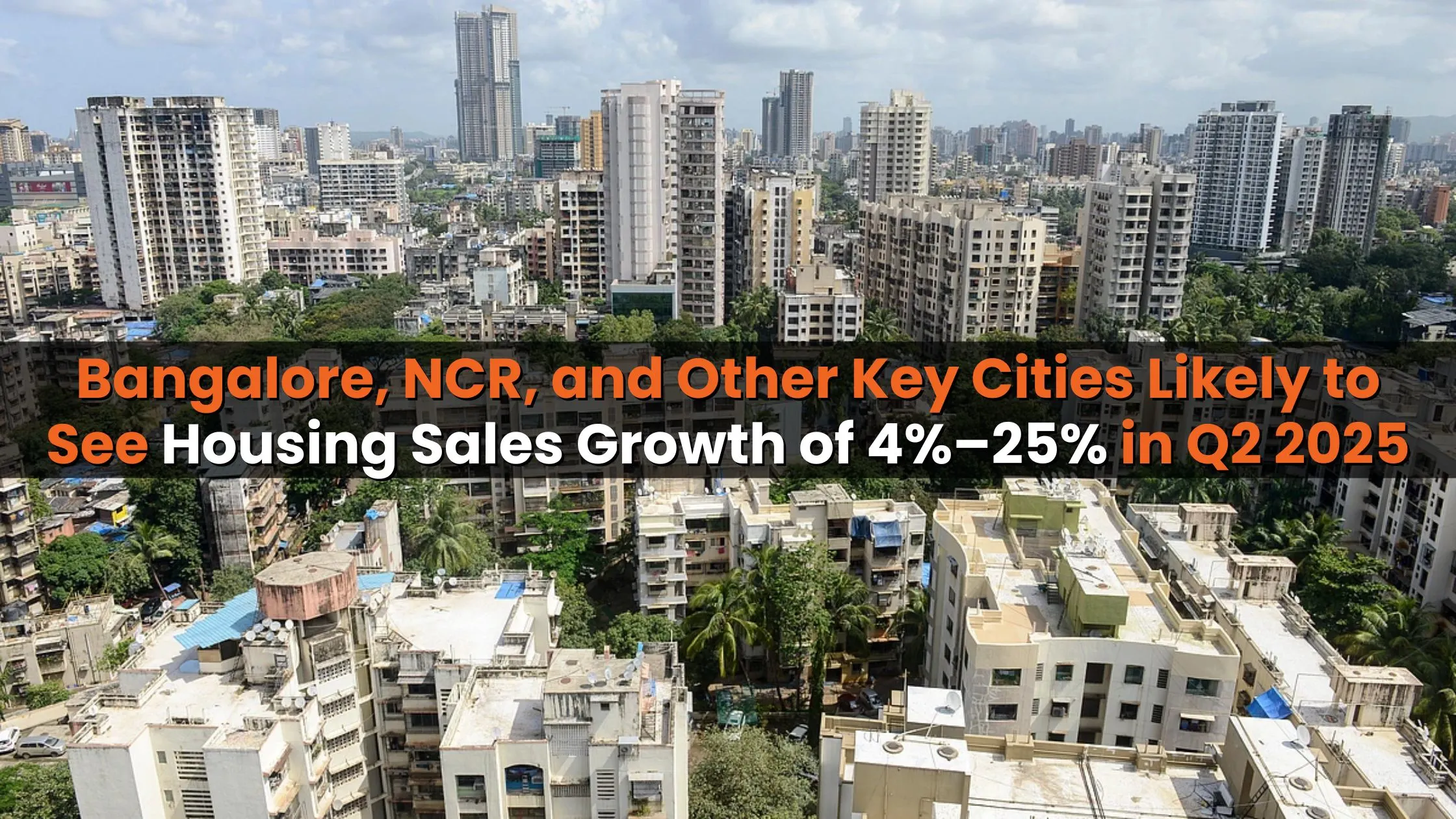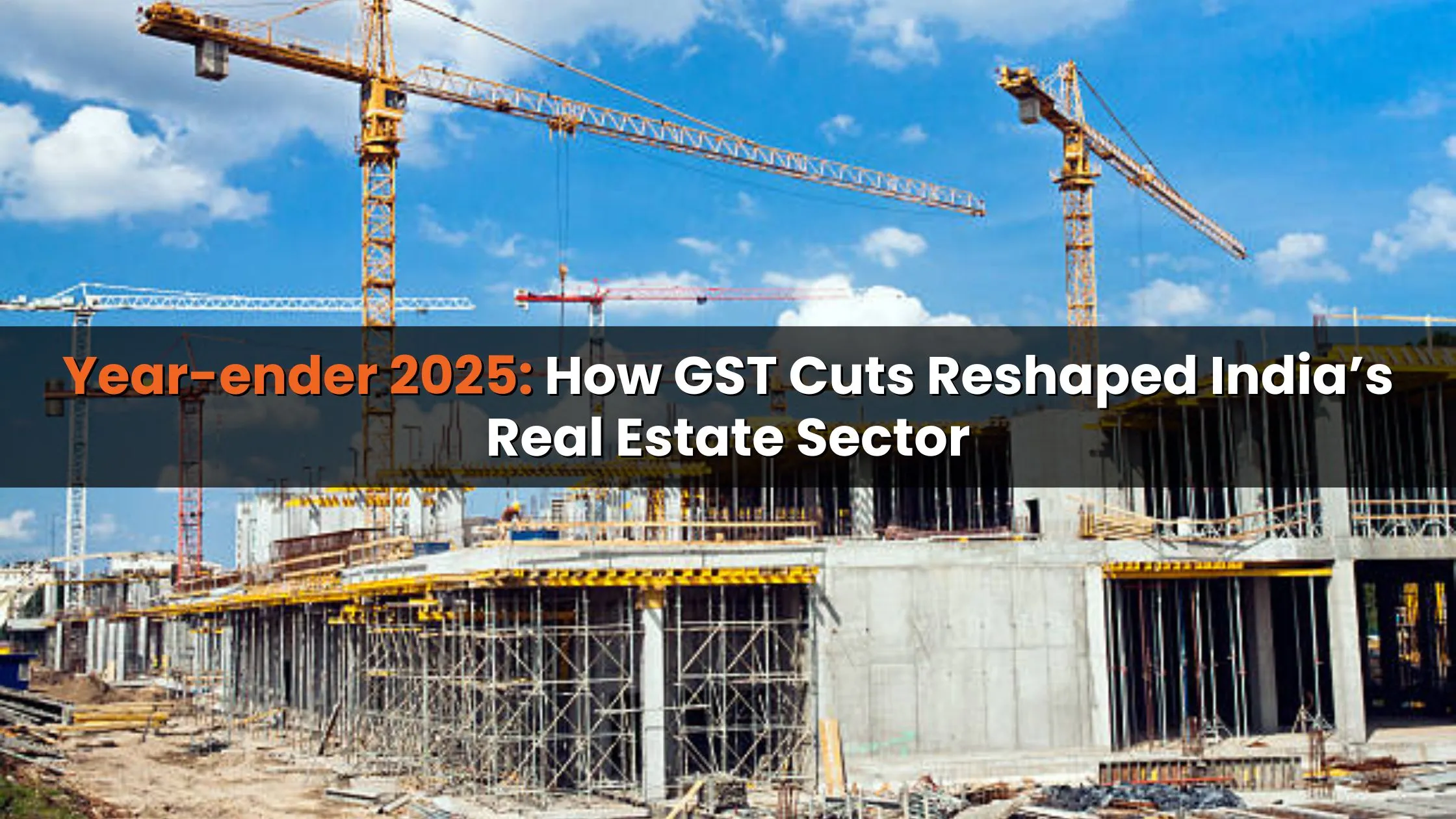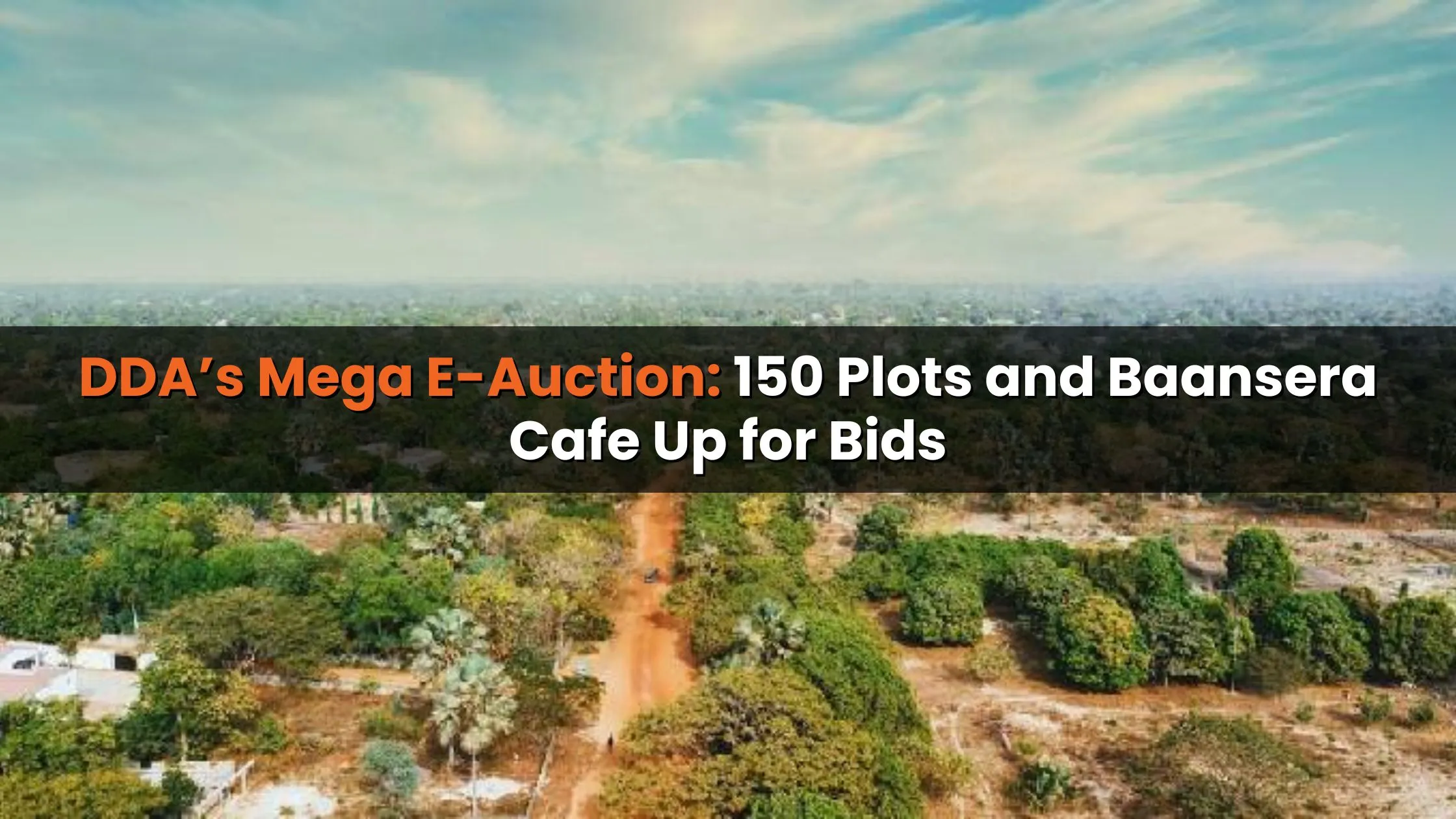Table of Content
India’s housing market continues to show contrasting trends across regions, with some cities witnessing robust demand while others face a slowdown. According to the latest data from PropEquity, Bengaluru, Delhi NCR, Hyderabad, Chennai, and Kolkata are set to record healthy sales growth ranging from 4% to 25%. This resilience underscores the strength of these markets even as Western cities like Mumbai, Thane, Navi Mumbai, and Pune grapple with weaker absorption.
The report highlights that Q2 quarter 2025 sales growth in these five cities reflects steady buyer demand, supportive market conditions, and selective developer activity, despite affordability pressures and a dip in new launches nationally.
Housing Sales Momentum in Key Markets
In Q3 2025 (July–September), these five cities are expected to record 50,828 housing unit sales, compared to 45,265 units in the same period last year. This translates into a strong year-on-year growth range of 4%–25%.
However, sales remain slightly below the 51,361 units sold in April–June 2025 (Q2 quarter 2025), pointing to a marginal quarter-on-quarter dip. Analysts attribute this to seasonal influences such as the monsoon and the Shradh period, which traditionally dampen buyer activity.
Still, the overall absorption trend suggests these markets are holding firm compared to western counterparts, cementing their role as growth drivers in India’s real estate sector.
Also Read: Housing Sales Fall 9% in Q3 2025, Value Climbs; MMR, Pune Dominate, NCR Tops Price Growth
Launch Activity Across the Five Cities
While demand has stayed steady, developer launches in these cities show a more cautious approach. During July–September 2025, new housing launches are projected at 55,033 units, up from 53,016 units a year earlier.
Yet, when compared to the 61,378 units launched in the Q2 quarter 2025, supply has seen a sequential decline. Industry experts suggest this reflects a shift towards balancing demand and supply, as developers focus on clearing existing inventory while selectively launching new projects.
This conservative approach is seen as a healthy sign, preventing oversupply while ensuring that genuine buyer demand continues to be absorbed effectively.
Sales and Launch Trends in Top 9 Cities
Expanding the view to India’s top nine housing markets, sales are projected to decline 4% year-on-year in Q3 2025, totaling around 1,00,370 units.
New launches across these nine cities are likely to stay flat at 92,229 units, though they have dropped 10% quarter-on-quarter.
The report emphasizes that this decline is primarily driven by Maharashtra’s markets, including Mumbai, Thane, Navi Mumbai, and Pune which saw contraction in sales ranging from 6% to 28%.
Thus, while southern and eastern markets are recording robust absorption, western markets continue to weigh down the overall numbers.
Regional Divergence: Growth in South & East vs. Decline in West
A clear divergence has emerged in India’s housing market. Bengaluru, Hyderabad, Chennai, and Kolkata are leading the momentum with robust sales, driving overall Q2 quarter 2025 sales growth.
In contrast, Mumbai, Thane, Navi Mumbai, and Pune are facing significant slowdowns. Data shows:
- Mumbai: Sales down by 8% year-on-year.
- Thane: Sharpest decline with sales falling 28%.
- Navi Mumbai: Sales dipped 6%.
- Pune: Decline of 16% compared to last year.
Meanwhile, Delhi NCR remains relatively stable, registering moderate growth and showing signs of consistent demand despite price escalations.
Insights from PropEquity
Samir Jasuja, Founder and CEO of PropEquity, highlighted that even though launches have slowed for two consecutive quarters, the market continues to remain healthy because sales absorption is outpacing new supply.
He added that while Q3 2025 activity may appear subdued, the upcoming festive season is expected to inject fresh momentum, leading to stronger launches and higher absorption in the coming months.
This outlook aligns with developer strategies to time project launches around festive periods, when buyer sentiment typically peaks.
Maharashtra Region Sales Performance
The report underscores that the biggest drag on overall housing sales comes from the Maharashtra region (MMR + Pune). Combined sales fell by 17% year-on-year, totaling 49,542 units in Q3 2025, down from 59,816 units in the same period last year.
This decline has also reduced Maharashtra’s share of pan-India housing sales to 49%, compared to 57% in Q3 2024.
A breakdown of city-specific sales performance reveals:
- Mumbai: 8% decline.
- Thane: 28% decline.
- Navi Mumbai: 6% decline.
- Pune: 16% decline.
The region’s overall slowdown highlights affordability concerns, higher property costs, and cautious buyer sentiment.
Also Read: Bengaluru to Launch Mobile App for e-Khata, Promises Faster Property Services
Quarter-on-Quarter Trends in Maharashtra
Despite the annual slump, quarter-on-quarter (QoQ) data presents a mixed picture:
- Mumbai: Posted an 18% rise in sales compared to Q2 2025.
- Navi Mumbai: Recorded 1% growth.
- Pune: Remained flat.
- Thane: Witnessed an 11% decline.
This suggests that while parts of the Maharashtra market are struggling, others particularly Mumbai are showing short-term resilience. However, the broader regional weakness continues to impact overall national housing numbers.
Conclusion
The latest PropEquity report paints a nuanced picture of India’s housing market. While national sales dipped modestly in Q3 2025, Q2 quarter 2025 sales growth across Bengaluru, Delhi NCR, Hyderabad, Chennai, and Kolkata reflects the resilience of these markets.
Southern and eastern cities are acting as growth engines, balancing out western markets where affordability challenges and rising costs are dampening demand.
Looking ahead, the festive season is expected to provide a timely boost, with developers lining up new launches and buyers displaying stronger intent. This combination of selective launches, steady absorption, and festive momentum could help sustain India’s housing market through the year-end, even as regional disparities remain.







Ans 1. Bengaluru, Delhi NCR, Hyderabad, Chennai, and Kolkata are showing strong housing sales growth, ranging from 4% to 25% year-on-year. These cities continue to attract buyers despite slower activity in western markets like Mumbai and Pune.
Ans 2. Across Bengaluru, Delhi NCR, Hyderabad, Chennai, and Kolkata, around 50,828 housing units are projected to be sold in Q3 2025, compared to 45,265 units in the same period last year, indicating steady demand growth.
Ans 3. Sales dipped slightly compared to Q2 2025, which saw 51,361 units sold, due to seasonal factors such as the monsoon and the Shradh period, which traditionally slow down buyer activity.
Ans 4. Developer launches remain cautious. In Q3 2025, about 55,033 units are expected to be launched, slightly higher than last year but lower than the 61,378 units launched in Q2 2025. Developers are focusing on balancing supply and demand while clearing existing inventory.
Ans 5. Western markets are affected by affordability pressures, higher property costs, and cautious buyer sentiment. Specific declines include Mumbai (-8%), Thane (-28%), Navi Mumbai (-6%), and Pune (-16%) year-on-year.
Ans 6. Delhi NCR has shown relative stability with moderate growth. Buyer demand remains consistent despite rising property prices, making it a resilient market within the national landscape.
Ans 7. Yes, some quarter-on-quarter trends show partial recovery. Mumbai recorded an 18% QoQ rise, Navi Mumbai saw 1% growth, Pune remained flat, and Thane faced an 11% decline. This indicates short-term resilience in specific cities despite overall regional weakness.
Ans 8. Southern and eastern cities like Bengaluru, Hyderabad, Chennai, and Kolkata benefit from strong buyer demand, better affordability, growing IT and industrial hubs, and steady developer activity. This helps them maintain robust absorption despite national challenges.
Ans 9. The festive season typically boosts buyer sentiment. Developers plan new launches during this period, which, combined with steady absorption, is expected to support sales growth and maintain market momentum through year-end.
Ans 10. Investors and homebuyers should focus on southern and eastern cities for better appreciation potential and liquidity. Western markets may require careful selection due to slower growth and higher property costs, but pockets like Mumbai show signs of short-term resilience.